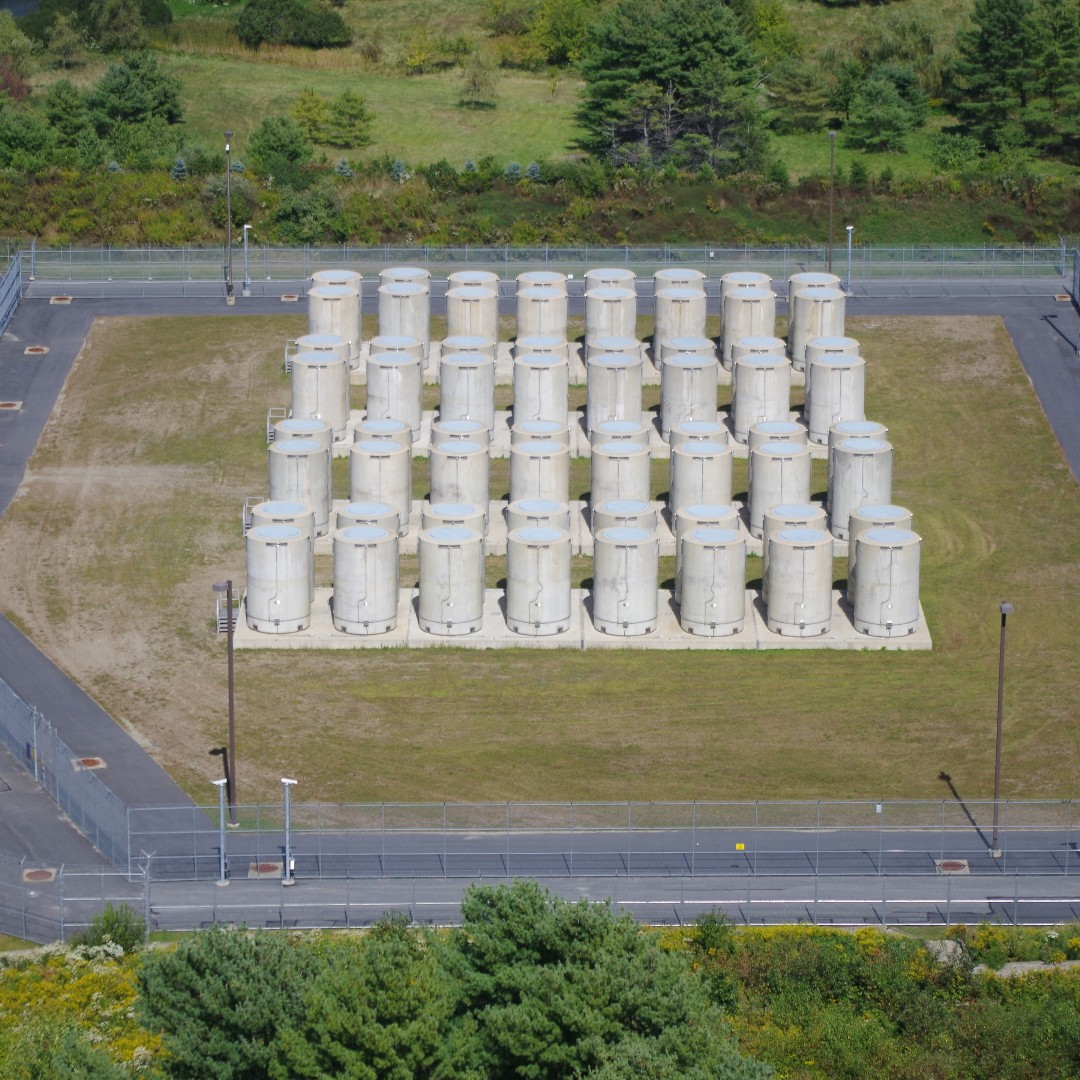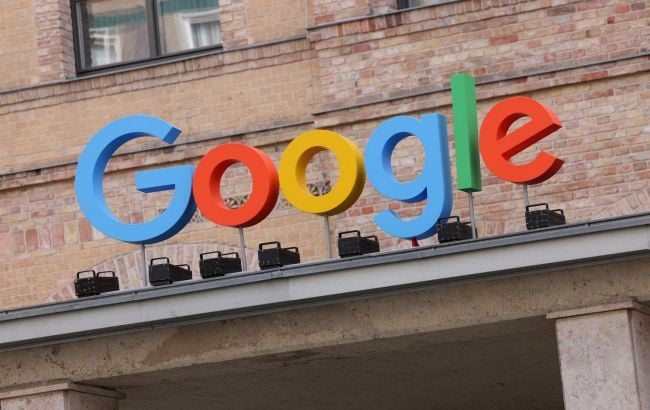Google, like Microsoft then begs for taxpayer money to run this operation and the government, being in bed with all companies agrees to sell its citizens out…yet again.
Inb4 Microsoft and google electricity services for residents.
If it results in the nuclear plants remaining online and providing energy after the AI bubble pops, that doesn’t seem so bad.
Fission is one of the cleanest energy sources we have today.
The AI bubble isn’t going to pop, it’s just going to transition to a rebranded cloud computing business.
A nuclear fission power plant generates about as much CO2 as wind turbines if you have a look at it’s whole lifecycle. That’s because just operation doesn’t generate CO2. But nonetheless that power plant is made from materials like lots of concrete. It needs to be built, decommissioned, etc. You need to mine the uranium ore, … All of that generates quite some CO2. So it’s far off from being carbon neutral. And we already have alternatives that are in the same ballpark as a nuclear power plant with that. Just that the fission also generates this additional nuclear waste that is a nightmare to deal with. And SMRs are less efficient than big nuclear power plants. So they’ll be considerably less “clean” than for example regenerative energy. I’d say they’re definitely not amongst the cleanest energy sources we have today. That’d be something like a hydroelectric power. However, it’s way better than oil or natural gas or coal. At least if comparing CO2 emissions.
It definitely is amongst the cleanest energy sources we have today, especially when the choice for most is either oil, coal or nuclear, the choice is easy. Hydro, solar or wind are often not viable because of climate or location reasons. Not to mention that all of these need to be built using concrete, that is not unique to nuclear. Also important is that hydro electricity also dramatically alters the area, killing many animals and moving many species out of their home.
You don’t need much concrete for wind, and only a single slab for the solar transformer.
The problem is the assumption that the datacenter must be running at 100% power 24/7
Btw, wind turbines aren’t made of concrete, the towers are metal tubes. But the blades are problematic, since they’re made from fiberglass. And solar panels aren’t concrete either. While - if I drive past a nuclear power plant, those are really huge concrete structures. And the problematic things about hydro plants are the reservoirs. It’s flooding a vast area to build a new reservoir and changing the flow in the river that destroys ecosystems. The plant itself isn’t that bad. So ideally you build it into an existing flow of water or use tidal energy instead of building a new dam. And that concern wouldn’t apply. I’m not an expert on north american geography, but I bet there are some opportunities left for power plants with a lesser impact on the ecosystem.
For over a century, the standard way we’ve been disposing of hazardous materials that can’t be easily recycled is to permanently bury it. We’re doing it with thousands of tonnes of hazardous materials daily.
A nuclear power plant only generates about 3 cubic meters of hazardous nuclear waste per year.
At the typical sizes we’re currently building them, you need 50-100 solar or wind farms to match the electricity output of a single nuclear reactor.
When we eventually dispose of the solar panels from those farms we literally end up with more toxic waste in heavy metals like cadmium than the nuclear power plant produced.
No solution is perfect.
But contrary to the propaganda, nuclear is one of our cleanest options.
The question is, why do we look at recycling solar panels, but compare that to nuclear and ignore that these have to be decomissioned and dismantled, too? And the whole process of mining uranium etc. While it may be true that the depleted uranium is low in volume, that’s far from being the actual amount of waste in the end. You’d have to compare the entire lifecycle of the plant to the entire lifecycle of a solar panel. (And solar isn’t the best option anyways.) Also who’s paying for 40.000 years of storage of those 3 cubic meters? The power companies certainly aren’t.
For over a century, the standard way we’ve been disposing of hazardous materials […]
Until 1994, one standard way of disposing of radioactive waste was throwing it into the ocean. There are at least 90.000 containers that got dumped along the shores of the USA alone. (Source: https://de.wikipedia.org/wiki/Altlasten_in_den_Meeren#Atommüllverklappung )
I’d agree that “No solution is perfect” qualifies for the history of nuclear energy.
Yes that’s correct.
To be more clear, nuclear waste is only a small percentage of the hazardous waste we’ve been disposing of by permanently burying it.
We’re [burying] thousands of tonnes of hazardous materials daily.
Are we though?
About 400,000 tonnes of used fuel has been discharged from reactors worldwide, but only about one-third has been reprocessed.
Yes. Nuclear waste is tiny. That’s the point.
Nuclear isn’t the only hazardous waste we dispose of burying it.
We’re disposing of tonnes of hazardous waste daily. Only a tiny percentage of that is nuclear waste.
Yet for some reason everyone loses their mind about the comparatively tiny amount of hazardous waste from nuclear and no one cares about the significantly larger about of hazardous waste from the eventual disposal of solar panels and 100s of other sources of hazardous waste.
The half life of solar panels is insignificant.
The half life of high grade nuclear waste is significant.
Until you get the bill, again.
There’s nothing clean about fission. It produces expensive poisonous waste that has to be stored for 1000 years. And in the US, no one wants it in their state, driving the price up further. And when you’re unlucky, you end up with superfund sites like Fukushima and Chernobyl.
It is very clean. The image below shows what 20 years worth of spent nuclear fuel looks like at the former Maine Yankee plant. This is way smaller than most supermarkets in north america, let alone their parking lots!

To add to this, spent fuel is over 90% recyclable. If the US were to instate a comprehensive recycling program like France has done, the spent fuel cache could be reduced to negligible amounts.
Nuclear might be better than coal or fossil fuels, but it’s still dirty and expensive.
Spent fuel recycling costs a fortune. Only France is currently invested in it.
“In 1996 it estimated that reprocessing of existing used nuclear fuel could cost more than $100 billion.”
Most waste is stored in underground salt mines and requires special transportation, handling, and storage. That storage includes providing space between the spent rods to prevent interaction (you can’t just stack them compactly together). So while you may read that we produce half a swimming pool worth of waste, it takes a lot more space to store the spent rods than a “grocery store”. We produce about 2000 metric tons of spent rods per year. In addition, there’s all the other waste created when you run a nuclear plant — that includes garments and other materials. That adds up to “160,000 cubic feet (4,530 cubic meters) of radioactive material from its nuclear power plants annually”.
Disposing of spent rod storage casks costs $1 million per cask.
And then there’s the waste produced when decommissioning plants, or when plants go awry.
https://www.scientificamerican.com/article/nuclear-waste-lethal-trash-or-renewable-energy-source/
https://en.m.wikipedia.org/wiki/Waste_Isolation_Pilot_Plant
There’s a great video DW tv did on reprocessing and still having to store spent nuclear waste here:
deleted by creator
https://www.washingtonpost.com/business/2024/10/03/nuclear-microsoft-ai-constellation/
Here’s the one for Microsoft. Google will follow suit sooner or later. These companies don’t get this loaded by spending their money on big projects like this
It’s a loan, not a grant. I agree they should go to the private sector for the load if they want to keep the energy for private use only, but they are required to pay it back, with interest. The company is worth far more than the loan is, so it’s very low risk.
Actually, it’s billions of public dollars. And if we don’t find a proper permanent solution, it’s going to become more: https://sustainability.stanford.edu/news/steep-costs-nuclear-waste-us
That article is pretty inflammatory, on purpose I believe. It rolls all of the costs into one, including nuclear weapons testing, costs of the Manhattan project, and even the costs other forms of energy entail at times. It’s clearly an anti-nuclear article doing it’s best to make the reader believe the costs are higher than they actually are.
I do agree with the article that we need to implement solutions, but they aren’t difficult. We know how to solve it, and it isn’t particularly expensive. These videos give good insight into how easy to contain nuclear waste is and solutions that we already have for it.
Yeah, unfortunately it’s kinda hard to find objective information. It’s either the environmental activists, or the nuclear lobby who publish the articles that show up on the first several pages of Google search. I’ve linked some report from the government and scientists in this thread, regarding cost. But the proper studies are hard to read and several hundred pages long. I doubt anyone here will read such things, they just claim something counter-factual without really knowing anything on the subject.
The Kyle Hill videos aren’t objective either. What he visits isn’t permanent storage. And it’s not accounting for all of the waste. I mean the reactor core has to be dismantled at some point, and so has the whole plant. And that won’t fit into the barrels. What he also doesn’t show is the groundwater contamination and environmental damage plus waste from uranium mining and milling. And I mean it’s nice that he shows one shiny and clean temporary storage facility. While the other side shows some corroding barrels at the bottom of the ocean. Or inside of some leaky salt mine. That’s all just framing. His opponents make arguments and dig up numbers that make nuclear fission look bad, while he shows the one facility that looks clean and good on camera. Trying to bullshit his viewers into believing his framing. In reality he just disregards the existence of the other facts, which definitely also exist. He just doesn’t talk about it to make it look a certain way.
I think what we can agree on is that nuclear energy has a lower carbon footprint than fossil fuels. But in turn it generates hazardous waste. And it’s not renewable either. And the barrels in the video won’t last 5.000 years or 30.000 years. It’s going to be expensive handling all of this for tens of thousands of years. And nuclear fission energy already is more expensive than renewable energy, even without the storage factored in. It’s definitely an expensive and problematic option. And nuclear fission is temporary anyways. There is a limited supply of uranium on earth and it’s not even that much. Peak uranium is currently predicted to be at about 2035. (That might change. And Uranium 235 isn’t the only thing that can be used for nuclear fission, afaik.)
I’d say all of this says we should avoid relying on nuclear fission, starting now. Claiming it’s carbon neutral definitely is a lie. And if someone generates waste, they’re responsible to treat it. Energy price needs to factor in the 40.000 years of storage. Doing inspections on all of the barrels every few years for tens of thousands of years, topping up the helium inside, transferring the waste into new barrels every few hundred years once they become defective… Clearing leaky salt mines and transferring the waste into a new one. Making sure it never gets into the groundwater. Handling accidents and incidents. I think that has to be paid now by the people who actually use that energy. The cost of our current energy can’t be burdened upon the future thousands of generations of people. That’s why I’m opposed to it. Because how it currently works is: Generate “cheap” nuclear energy and let the taxpayer pay for the majority of the issues with it, while companies get their energy subsidized that way. All the problems with storage will have to be dealt with by future generations. We currently don’t have any good idea for permanent storage, but that isn’t stopping us from generating even more waste. We’re “investing” in a technology that is known not to last us into the next century, because the fuel is most likely used up by then. And we do all of that while we have better and cheaper options available. Those come with way less issues. They’re already cheap and there will be a massive payoff if we invest in them. But somehow we’re opposed to that?
And I think the perspective in the YouTube videos is very naive. Alike a 4 yo who thinks beef, chocolate and vegetables come from the supermarket. And the packaging vanishes in the trash bin and that’s it.
For waste, yeah it has to be taken care of. However, nuclear is the only energy resource that we require to do this. All others tend to just let the public (or others in the area) deal with it. Solar also creates waste through mining. Wind is pretty good, but not perfect and the turbines aren’t yet recyclable, and you can bet they aren’t having to pay for their storage. They also will require some form of energy storage that nuclear won’t need, which will likely partially include chemical batteries, which are not environmentally friendly to produce, but again won’t be rolled into their cost.
The anti-nuke movement is largely funded by existing energy companies who don’t want to compete on even ground. They’ve had so many laws passed that increase costs. There are countries where nuclear is much cheaper, which shows that a large part of the cost is regulations, not fundamental costs. Even in the US it’s competitive with offshore wind and coal for cost though, which we still build both of.
Most nuclear waste does not need to be stored for tens of thousands of years either, like you imply. Some does, but not much. Yeah, we still need a solution for that small amount, but those solutions already exist, they just need to be implemented. Again, no other energy gets waste handling rolled into their cost. They just become negative externalities someone else has to deal with. Nuclear is just easy to capture the waste, so they store it. This should be a positive, not a negative.
It’s also ridiculously clean and safe. Even including nuclear accidents (which become less likely each time, and are now almost impossible), it’s next to the safest energy source. The only thing safer is solar, by a tiny amount.
https://ourworldindata.org/safest-sources-of-energy
https://www.visualcapitalist.com/cp/charted-safest-and-deadliest-energy-sources/
It is a great baseline power source we should be relying on. Obviously I agree, it shouldn’t be everything. Solar and wind are ideal to make up the majority of the grid, but as a safe and reliable supply of power, nuclear should support them. It perfectly fills the gap left by them that otherwise requires massive amount of power storage, which is far from ideal. We should remove the regulations that have kneecapped them to protect traditional dirty energy and provide solutions for permanent waste disposal so it doesn’t artificially increase their costs.
The IPCC report lists higher lifecycle emissions for nuclear than your numbers. We probably need to take all of that with a grain of salt. But it’s about comparable to some of the renewables.
And even if you want to use nuclear for baseline power, you’re going to have a problem in like 40-100 years once uranium mining gets harder as we’re depleating the resources.
And I mean “theoretically” having storage is kind of a joke, since we’re not generating the waste in theory, but in practice. So we also need the solution to actually exist. And as far as I know it might be a hoax anyways and there might be a good reason why we struggle actually implementing it. Usally people claim the waste can be put somewhere underneath the earth. In an old salt mine or something like that. And the geologists I asked said it’s true that a salt reservoir underneath the earth is stable for 100.000s of years… Unless someone tampers with it. For example breaches it by digging into it, taking the salt out and putting waste inside. Then it’ll become unstable. And we have precedent for that.
So. I’ve heard the same things about long term storage. But it seems to me there is more to it. Until now nobody was able to build a proper one. Sure they claim in theory it’s easy, still they didn’t do it. And geologists have some doubt it’ll work on that timescale in the first place. And looking into the past we also weren’t very successful with putting waste into old mines. A good amount of them has become leaky. Or something happened with the groundwater that wasn’t expected to happen… And I’d rather not have toxic waste mix with groundwater anywhere close to where I live…
I mean that’s just one concern. Mainly I’d like to know what’s the actual cost of containing a large amount of waste for a shorter timespan, and containing a smaller amount of waste for tens of thousands of years. All the maintenance, cost to handle incidents and making sure it doesn’t escape into the environment with close to absolute certainty. Added up for the necessary timescale. Just hoping our grandkids will figure out a way is the same mentality as burning oil and letting them deal with the consequences.
I’d really like to force them (Google in this instance) to pay for it. And as we need a renewable alternative anyways, I’d also on top like to invest in finding solutions to for example recycling of wind turbine parts. And a “smart” grid that handles electricity being not at 100% all the time. At some point we need it anyways, and the sooner we begin, the earlier it pays off.
yes, let’s use nuclear energy to generate half assed AI assistants, images and videos instead of making clean energy cheaper
Nuclear energy is clean, but I agree this energy should be used for a useful purpose, which would bring down costs.
that is the point? when big tech monopolizes sources of clean energy, it becomes more expensive (or can not become cheaper at best) because there is less availability
Every Google search should include an AI answer! Who cares about energy usage, we’ll just buy a nuclear power plant!
break up big tech. regulate monopolies before we get the second great depression.
What is the motive behind this push to ram AI down out throats?
They already have all my emails, photographs. location and browsing data.
What do they gain from providing unreliable information at many times the power use? Or having me ask “write a sincere-sounding thank-you email”.
I feel like I’m missing some big revelation that will make it make sense.
I say this as someone that works in AI.
It’s all a smoke-screen. It shows that Google (and every other big tech company) is producing super secret, super high tech stuff that should make their shareholders super happy. The reality is that Google and co haven’t produced shit for years, have laid off hundreds of thousands of people worldwide, and don’t have long term plans to improve outside of enshittifcation.
100%
14 years of gaping monetary policy conditioned Corps to making profits from nearly free debt.
Now they have to actually USE their businesses’ capabilities and it turns out they suck at being businesses. MIT calls it a “capability trap.”
They’re just con men still hoping people will dance to their tune after the music has stopped.
Money.
AI will improve and this will be a multi trillion dollar market. Big tech is in a race to be the biggest.
We don’t need it and should be focussing on important things but yay capitalism right?
Yeah but big tech is also the customer. So it doesnt make sense. How will they make money if the only way to do so is to trick other giant tech companies into buying and using your product?
better than using coal but it would be even better without those expensive datacenter running the bullshit machines
“clean energy”
Don’t nuclear power plants produce waste which is highly problematic because it’s hazardous and radioactive? I wouldn’t call that clean. And SMRs generate even more waste than big nuclear plants.
Burying the small amount of waste in a stable non-actively forming mountain for a few thousand years is 1000x better than burning things and putting them into the air.
I’m not so sure about that. We already had to pay a lot of taxpayers’ money to fix bad issues with those storage facilities. And it’s just been a few decades with at least tens of thousands of years to go. That could become very, very expensive. And nasty to deal with for future generations.
I’d say just burying your waste where no one can see it isn’t a good solution. Neither is just dumping it into the ocean. And knowing a worse alternative doesn’t make it right.
You’re correct, burning yet more oil and coal and putting that CO2 into the atmosphere isn’t a viable option either. That’d ruin the climate and be unhealthy for us.
If the choice is spend more to hold onto the byproducts or let the byproducts slowly make the entire earth uninhabitable I’m kinda in favour of the former. Ideally completely green energy would be preferred but I guess it just doesn’t scale well with consumer demands and patterns :/.
There is rarely only a binary choice. Arguing like there is creates a false dilemma.
The combination of Wind solar and batteries is greener, more cost effective and more scalable than nuclear.
Or we could pop the AI bubble and concentrate on reducing consumption.
It does, and it’s cheaper and faster to implement. Solar and wind are dirt cheap. Storage has long been the bottleneck, but we’ve made gargantuan progress in scalable battery technology (sodium batteries, for example).
A green grid would also help distribute energy production closer to where people live, and reduce single points of failure. It goes to increase grid resilience and reduce dependence on a few large energy corporations.
Nuclear was a useful technology, and likely safer than coal. But anyone pushing for nuclear (over 100% renewables) nowadays is helping uphold the status quo of centralized energy production in the hands of a a few rich capitalists.
Lol. Seems the nuclear lobby is here and down-voting everyone who likes progress.
I read renewable energy is way cheaper than nuclear energy. And it comes with a low carbon footprint and without nuclear waste. (We have some actual historical numbers in the World Nuclear Report P. 293 which show nuclear is pretty expensive compared to renewable these days.)
So the solution is pretty obvious. Sign a contract over a few billion dollars with renewable energy instead of nuclear. It’ll be cheaper anyways. And has the added benefit that it’s available now. Whereas the SMR startups still have to figure out a few engineering challenges. And we’d avoid all the nuclear waste that’ll become a problem for future generations. And I mean it’s not that uranium or the other ores are super abundant anyways. Nuclear fission is a temporary solution in the first place. And not a particularly good one.
And investing in renewable will then grow that industry and make the energy even cheaper.
Only downside I see is: you can’t build renewable (and the datacentre) anywhere. It’d have to be for example in Texas for solar, or close to the mountains or some water flow for hydro. Or somewhere windy or at the shore for wind energy. The latter two have the benefit that they’re available during the night, too. And I guess the USA has some minor potential for thermal energy, too. But I don’t consider this a major issue since we have internet pretty much everywhere. They’d just need to lay some more fibre network to the site.
highly problematic because it’s hazardous and radioactive?
Thing is, there’s very little of that waste, with much less impact than say, burning coal.
Also, it’s highly radioactive only when taken fresh out of reactor - this waste is stored in pools, until it decays. What you’re left is weakly radioactive, long term waste that needs to be buried for a long time.
Adding to this. The waste has been used to fuel subsequent reactions and could be used to produce more power
I mean they seem to be still figuring this out… But isn’t the whole SMR harardous waste after it got decommissioned? That depends a bit on the technology used. But that’d be a huge pile of mildly radioactive steel, plumbing and concrete in addition to the depleted fuel, which is highly radioactive. And as far as I know the re-use to get the rest of the energy out also isn’t solved yet. I mean obviously that should be done. Only taking out parts of the energy and wasting the rest isn’t very efficient. Sadly that seems to be exactly what we’re doing in reality.
much less impact than say, burning coal.
Why compare to coal, not wind & solar + batteries.
Because wind and solar don’t have the on-demand capacity. Even with batteries, you can’t count on them to deliver power reliably
Maybe the AI training could be paused until the sun comes out again.
Coal and nuclear are not on demand either. Only hydro and gas offer any real flexibility.
It’s not enough to pollute the Internet, it’s time to pollute the world with radioactive waste.
That’s brilliant!
technology companies are going to kill us all
nuclear power should be illegal everywhere










